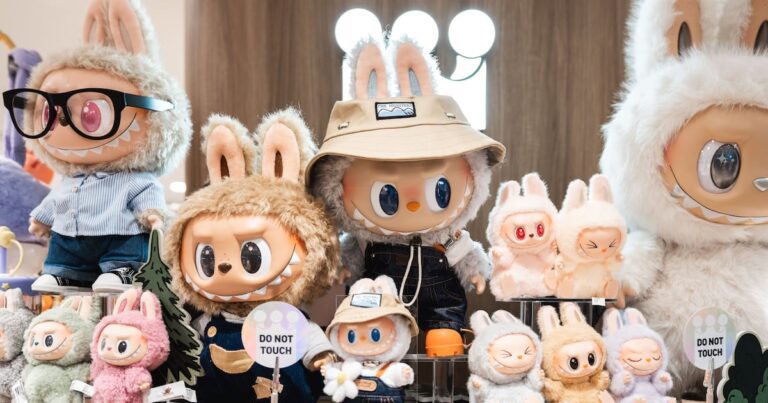No one saw 2025’s hottest accessory coming.
Labubu dolls, cartoonish plush toys designed ten years ago by Hong Kong-born artist Kasing Lung as part of his Nordic folklore-inspired character series “The Monsters” and now distributed by Chinese toy maker Pop Mart, have become a viral sensation this summer.
The figures, which typically cost around $20, rose to prominence after K-pop star Lisa began sporting them as bag charms last year. They’ve since sparked wraparound queues at malls around the world and have been spotted hanging off the handbags of celebrities including Rihanna, Dua Lipa, Central Cee and Marc Jacobs. Gen-Z and Gen Alpha customers have repeatedly sold them out; earlier this summer on TikTok Shop, a single, eight-hour live stream generated over $1.5 million in Labubu sales.
With their flushed cheeks, mischievous eyes, wide grins exposing nine serrated teeth, pointed bunny ears and rotund, fuzzy bodies, Labubu dolls’ popularity is baffling to many. But their “ugly-cute” looks are precisely why they’re so beloved among Gen-Z.
“Consumers, driven by the dual desire for emotional comfort and expressive individuality during challenging times, find resonance in Labubus’ unique blend of innocence, irreverence, and charm,” wrote Michael Appler, vice president of marketing at Trendalytics, in an email.
Their nostalgic and playful aesthetic reflects Gen-Z’s disillusionment with the stark realities of adulthood during uncertain economic times. The dolls’ rise to prominence is also reflective of the “lipstick index” at work: As the cost of living soars and consumer sentiment dims, shoppers are more likely to pay for small, inexpensive “luxuries” that double as unique status symbols.
While cuteness has been trending in fashion for months now, with everything from polka dots to fruit jewellery gaining popularity, Labubus in particular have stood out. Though overall viral microtrends have slowed, the Labubu is the most visible success in a series of trending “blind box” items — or small collectibles whose contents are sealed and unknown to the buyer at the time of purchase — with limited production that includes Smiski toys (green, glow-in-the-dark figures) and Sonny Angels (plastic, semi-nude babies collected by Bella Hadid and Victoria Beckham). The dopamine rush of these limited-edition mystery boxes also gamifies the purchasing experience, and the toys serve as an “if-you-know-you-know” marker for fellow collectors.
The collectibles’ ascent has been astronomical, with the Chinese government even commencing efforts to crack down on counterfeit Labubu dolls, or “Lafufus,” earlier this year. But despite recent bullish growth, Pop Mart’s shareholders fear the collectibles will soon begin to lose traction, and that the company’s success can’t be sustained.
Below, a look at Labubu dolls’ trajectory in four charts.
Trendalytics analysis found that year-on-year Google searches for Labubu soared by 9,800 percent in June. Pop Mart is also benefiting from continuing consumer interest in bag charms, which saw searches more than double this summer since 2024, while average weekly posts related to bag charms on TikTok have skyrocketed over twentyfold.

In the first half of 2025, mentions of Labubu alongside Hermès generated almost $30 million in media impact value — a staggering 4 percent of total conversations around Hermès — as bag charms tapped into a desire for greater personalisation.
“[The] broader cultural move toward individuality is a perfect backdrop for the rise of bag charms and, in turn, Labubu,” wrote StockX senior director of marketplace Drew Haines in an email.

Rare Labubu dolls have been sold for vast premiums at auctions and on resale platforms. Since October, Pop Mart has been the number-one bestselling collectibles brand on StockX, with sales up 748 percent thus far in 2025. The toy maker, which had seen fewer than 100 trades in 2023, generated tens of thousands of sales on StockX last year.

Though Pop Mart said it expects a profit jump of 350 percent in the first half of 2025, investors appear to have taken a more cautious outlook on the toy maker, likely because blind box trends tend to be volatile and lack longevity. As Labubu dolls rise in popularity, they can no longer be a secret of the “in group” or an emblem of personal identity. If early pullback is any indication, Labubu mania may have already hit its peak.


